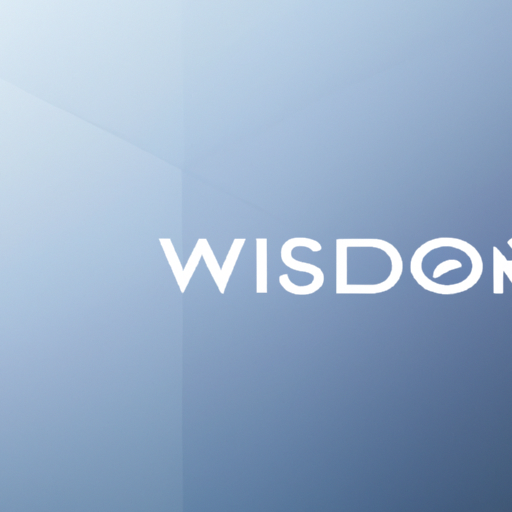-
Table of Contents
- Introduction
- Privacy-Preserving Protocols: The Cornerstone of User Data Dominion in Web3 Wisdom
- Data Monetization Models in Web3 Wisdom: A Deep Dive into User Data Dominion
- Self-Sovereign Identity and Permissioned Access: The Future of User Data Dominion in Web3 Wisdom
- Cryptographic Keys in Web3 Wisdom: Enhancing User Data Dominion
- Decentralized Databases and User Data Dominion: A New Era of Web3 Wisdom
- Exploring Web3 Wisdom: The Power of User Data Dominion
- Q&A
- Conclusion
“Web3 Wisdom: Empowering Users, Unmasking Data Dominion”
Introduction
Web3 Wisdom: User Data Dominion Unveiled is a comprehensive guide that explores the revolutionary concept of Web3, a new phase of the internet that aims to give users full control over their data. This concept is a significant shift from the current Web2 model, where large corporations hold dominion over user data. The book delves into the intricacies of this new model, discussing its potential benefits, challenges, and the profound impact it could have on data privacy and digital interactions. It serves as an essential resource for anyone interested in understanding the future of the internet and the potential for a more decentralized and user-controlled digital landscape.
Privacy-Preserving Protocols: The Cornerstone of User Data Dominion in Web3 Wisdom
Web3 Wisdom is a revolutionary concept that is set to redefine the way we interact with the internet. At the heart of this transformation is the principle of User Data Dominion, a concept that places control of personal data firmly in the hands of the individual. This shift is made possible through the implementation of Privacy-Preserving Protocols, which serve as the cornerstone of User Data Dominion in the Web3 Wisdom era.
In the current Web2 model, user data is often treated as a commodity, traded and exploited by corporations for profit. This model has led to numerous privacy breaches and a general erosion of trust in online platforms. Web3 Wisdom seeks to rectify this by prioritizing User Data Dominion, ensuring that individuals have complete control over their personal information.
Privacy-Preserving Protocols are the key to achieving this goal. These protocols are designed to protect user data while still allowing for the functionality and convenience that we have come to expect from online platforms. They achieve this delicate balance by employing advanced cryptographic techniques and decentralized systems.
One of the most promising Privacy-Preserving Protocols is zero-knowledge proofs. This cryptographic method allows one party to prove to another that they know a specific piece of information without revealing the information itself. In the context of Web3 Wisdom, this could mean proving that you are over 18 without revealing your exact age or date of birth, for example. This allows for the verification of necessary information while preserving the privacy of the user.
Another crucial privacy-preserving protocol is the use of decentralized identifiers (DIDs). DIDs are a new type of identifier that enables verifiable, decentralized digital identity. Unlike traditional identifiers, such as email addresses or usernames, DIDs are owned and controlled by the individual, not a central authority. This means that users have complete control over their digital identities, including how their personal data is shared and used.
Furthermore, Privacy-Preserving Protocols also include the use of blockchain technology. Blockchain’s decentralized nature ensures that no single entity has control over the data. Instead, information is stored across a network of computers, making it virtually impossible for any unauthorized party to alter or access the data. This not only enhances security but also promotes transparency and trust.
The implementation of these Privacy-Preserving Protocols is not without its challenges. For one, there is the issue of scalability. As more users adopt these protocols, the systems must be able to handle the increased load without compromising performance. Additionally, there is the challenge of interoperability. Different protocols must be able to work together seamlessly to ensure a smooth user experience.
Despite these challenges, the potential benefits of Privacy-Preserving Protocols in the Web3 Wisdom era are immense. By placing control of personal data back in the hands of the individual, these protocols have the potential to restore trust in online platforms and pave the way for a more secure, private, and equitable digital future.
In conclusion, Privacy-Preserving Protocols are the cornerstone of User Data Dominion in the Web3 Wisdom era. Through advanced cryptographic techniques and decentralized systems, these protocols are set to transform the way we interact with the internet, prioritizing user privacy and control. As we move towards this new era, it is crucial that we continue to develop and refine these protocols to ensure they can meet the demands of a rapidly evolving digital landscape.
Data Monetization Models in Web3 Wisdom: A Deep Dive into User Data Dominion
Web3 Wisdom is a revolutionary concept that is set to redefine the way we interact with the internet. At the heart of this transformation is the idea of User Data Dominion, a principle that empowers users to have control over their data. This is a stark departure from the current Web2 model, where large corporations hold sway over user data, often monetizing it without the explicit consent of the users. In the Web3 paradigm, Data Monetization Models are being reimagined to put the user at the center, giving them the power to decide how their data is used and by whom.
The Web3 model is built on blockchain technology, a decentralized system that ensures data security and transparency. In this system, every transaction is recorded on a public ledger, making it virtually impossible for any entity to manipulate or misuse data. This technology is the backbone of cryptocurrencies like Bitcoin and Ethereum, but its potential extends far beyond digital currencies. It is the key to unlocking User Data Dominion, giving users the power to control and monetize their own data.
In the Web3 world, users can choose to share their data with companies in exchange for services or compensation. This is a win-win situation, as companies get access to valuable user data, and users get rewarded for their contribution. This model is already being implemented by some forward-thinking companies. For instance, Brave, a privacy-focused web browser, allows users to opt into viewing privacy-respecting ads and rewards them with Basic Attention Tokens (BAT). Users can then use these tokens to tip content creators or convert them into other cryptocurrencies.
Another exciting development in the Web3 space is the emergence of Decentralized Autonomous Organizations (DAOs). These are organizations that are run by smart contracts on the blockchain, with decisions being made by the members of the organization. DAOs can be used to create data trusts, where users pool their data and collectively decide how it is used. This model not only gives users control over their data but also allows them to benefit from its monetization.
The concept of User Data Dominion also has significant implications for privacy. In the Web2 model, users often have little control over who has access to their data and how it is used. This has led to numerous privacy breaches and scandals in recent years. In contrast, the Web3 model gives users the power to decide who can access their data, creating a more secure and privacy-focused internet.
However, the transition to Web3 and User Data Dominion is not without challenges. For one, there is a need for robust legal frameworks to protect user rights and prevent misuse of data. Additionally, there is a need for user education, as many people are not aware of the value of their data and how it can be monetized.
In conclusion, the Web3 Wisdom model, with its focus on User Data Dominion, is set to revolutionize the internet. It promises a future where users have control over their data and can benefit from its monetization. While there are challenges to overcome, the potential benefits for users and society at large make this a transformation worth pursuing.
Self-Sovereign Identity and Permissioned Access: The Future of User Data Dominion in Web3 Wisdom

In the digital age, the concept of Self-Sovereign Identity and Permissioned Access is rapidly gaining traction, particularly in the context of Web3 Wisdom. This paradigm shift is set to revolutionize the way we interact with the digital world, placing the power of data dominion firmly in the hands of the user.
Self-Sovereign Identity, at its core, is a concept that allows individuals to have complete control over their personal data. It is a digital identity that is not owned or controlled by any third party, but rather, by the individual themselves. This is a significant departure from the current Web2 model, where user data is often stored, managed, and even sold by third-party entities. In contrast, Self-Sovereign Identity empowers users to decide who can access their data, when, and for what purpose.
This shift towards Self-Sovereign Identity is intrinsically linked to the concept of Permissioned Access. In a Permissioned Access model, users have the ability to grant or revoke access to their data at any time. This is a far cry from the current model where once data is shared, control over its use is often lost. With Permissioned Access, users can ensure that their data is only used in ways that they have explicitly approved.
The advent of blockchain technology has been instrumental in the development of these concepts. Blockchain provides a decentralized and secure platform for storing and managing digital identities. This technology ensures that user data is not stored in a central location that could be vulnerable to hacking or misuse. Instead, data is stored across a network of computers, making it virtually impossible for unauthorized parties to access it.
Moreover, blockchain technology enables the creation of smart contracts, which can be used to automate the process of granting and revoking access to data. This means that users can set specific conditions for when their data can be accessed, and by whom, without having to manually approve each request.
The combination of Self-Sovereign Identity and Permissioned Access is set to redefine the concept of User Data Dominion in the era of Web3 Wisdom. It promises to give users unprecedented control over their personal data, allowing them to decide who can access their information, when, and for what purpose. This not only enhances user privacy but also fosters trust in digital interactions.
However, the transition to this new model is not without challenges. For one, there is a need for widespread education and awareness about the benefits and workings of Self-Sovereign Identity and Permissioned Access. Additionally, there are technical challenges to overcome, such as ensuring the interoperability of different blockchain platforms and the scalability of these solutions.
Despite these challenges, the potential benefits of Self-Sovereign Identity and Permissioned Access are immense. They represent a significant step towards a more user-centric digital world, where individuals have full control over their personal data. As we move towards the era of Web3 Wisdom, these concepts are set to become increasingly important, shaping the future of digital interactions and User Data Dominion.
Cryptographic Keys in Web3 Wisdom: Enhancing User Data Dominion
Web3 Wisdom is a revolutionary concept that is set to redefine the way we interact with the internet. At the heart of this transformation is the principle of User Data Dominion, a concept that empowers users with full control over their personal data. This is a significant departure from the current Web2 model, where large corporations hold sway over user data. The key to achieving this data dominion in the Web3 era lies in the use of Cryptographic Keys.
Cryptographic Keys are a fundamental component of the Web3 infrastructure. They are essentially digital codes that are used to encrypt and decrypt data, ensuring that only authorized parties can access it. In the context of Web3, these keys are used to secure user data, providing a robust layer of protection against unauthorized access. This is a critical aspect of User Data Dominion, as it ensures that users have exclusive control over who can access their data.
The use of Cryptographic Keys in Web3 is not just about securing data, but also about enabling a more decentralized and democratic internet. In the current Web2 model, user data is typically stored on centralized servers owned by large corporations. This not only gives these corporations undue control over user data, but also makes the data vulnerable to hacking and other forms of cybercrime. With Cryptographic Keys, however, data can be stored on decentralized networks, with each user holding the keys to their own data. This not only enhances data security, but also promotes data sovereignty, giving users the power to control their own digital destinies.
Moreover, Cryptographic Keys also play a crucial role in facilitating peer-to-peer transactions on the Web3 platform. In the Web3 model, users can directly interact and transact with each other without the need for intermediaries. This is made possible by blockchain technology, which uses Cryptographic Keys to verify and secure these transactions. This not only makes transactions more efficient and cost-effective, but also enhances user privacy and security.
However, while Cryptographic Keys offer numerous benefits, they also come with certain challenges. For one, managing these keys can be complex, especially for non-technical users. Losing a key can result in permanent loss of access to one’s data, which can be catastrophic. Therefore, it is crucial for users to understand how to properly manage and secure their keys.
In addition, while Cryptographic Keys enhance data security, they are not completely immune to cyber threats. Sophisticated hackers can still potentially crack these keys and gain unauthorized access to user data. Therefore, it is important for users to stay vigilant and adopt best practices for data security.
In conclusion, Cryptographic Keys are a vital tool in the quest for User Data Dominion in the Web3 era. They offer a powerful means of securing user data, enabling a more decentralized internet, and facilitating peer-to-peer transactions. However, they also come with certain challenges that users must be prepared to navigate. As we move towards a more user-centric internet, it is crucial for us to understand and harness the power of these keys to truly unlock the potential of Web3.
Decentralized Databases and User Data Dominion: A New Era of Web3 Wisdom
Web3 Wisdom is ushering in a new era of User Data Dominion, a concept that is fundamentally transforming the way we interact with the internet. This paradigm shift is largely driven by the advent of Decentralized Databases, a cornerstone of the Web3 infrastructure.
Decentralized Databases, unlike their centralized counterparts, are not controlled by a single entity. Instead, they are distributed across a network of computers, each of which holds a copy of the entire database. This decentralization ensures that no single entity has complete control over the data, thereby enhancing security and privacy.
In the context of User Data Dominion, Decentralized Databases offer a compelling proposition. They allow users to have full control over their data, a stark contrast to the current Web2 model where tech giants like Google and Facebook have almost unrestricted access to user data. In the Web3 world, users can decide who can access their data, when, and for what purpose. This is a significant shift towards a more democratic and equitable internet.
The concept of User Data Dominion is not just about control, but also about value. In the Web2 model, tech giants monetize user data by selling it to advertisers, with users receiving little to no compensation. However, in the Web3 model, users can potentially monetize their own data. This could lead to a more equitable distribution of wealth on the internet, where users are rewarded for the value they create.
Decentralized Databases also offer enhanced security. In a centralized database, a single breach can compromise all the data. However, in a decentralized database, an attacker would need to breach the majority of the network to compromise the data, a significantly more challenging task. This makes Decentralized Databases inherently more secure than their centralized counterparts.
Moreover, Decentralized Databases are more resilient to failures. In a centralized database, if the central server fails, the entire system goes down. However, in a decentralized database, if one node fails, the system continues to function, as the data is replicated across multiple nodes. This makes Decentralized Databases more reliable and robust.
The transition to Web3 and Decentralized Databases is not without challenges. For one, the technology is still in its infancy and there are technical hurdles to overcome. Additionally, there are regulatory and legal challenges, as the concept of User Data Dominion disrupts established business models and raises new legal questions.
However, despite these challenges, the potential benefits of User Data Dominion and Decentralized Databases are immense. They promise a more democratic, equitable, and secure internet, where users have control over their data and are rewarded for the value they create.
In conclusion, the advent of Web3 and Decentralized Databases is ushering in a new era of User Data Dominion. This is a significant shift towards a more democratic and equitable internet, where users have control over their data and can potentially monetize it. While there are challenges to overcome, the potential benefits are immense, making this a trend worth watching. As we move into this new era of Web3 Wisdom, it is clear that User Data Dominion is set to fundamentally transform the way we interact with the internet.
Exploring Web3 Wisdom: The Power of User Data Dominion
Web3 Wisdom is a revolutionary concept that is set to redefine the digital landscape by empowering users with control over their data. This paradigm shift, known as User Data Dominion, is a cornerstone of the Web3 philosophy, and it is poised to transform the way we interact with the internet.
In the current Web2 model, user data is often treated as a commodity. Tech giants and corporations harvest, store, and monetize user data, often without explicit consent. This model has led to numerous privacy concerns and has sparked debates about data ownership. However, the advent of Web3 is set to change this narrative by placing the power back into the hands of the users.
Web3, or the decentralized web, is a vision for a new generation of the internet that is built on blockchain technology. It promises to create a more open, secure, and user-centric online world. At the heart of this vision is the principle of User Data Dominion, which asserts that individuals should have complete control over their data.
User Data Dominion is not just about privacy; it’s about power and control. It means that users have the right to decide who can access their data, how it is used, and even the ability to monetize it if they choose. This shift in control is a significant departure from the current model, where corporations hold the reins.
The implementation of User Data Dominion in the Web3 model is facilitated by blockchain technology. Blockchain’s decentralized nature ensures that data is not stored in a central location, making it less susceptible to hacking or unauthorized access. Moreover, blockchain’s transparency allows users to track their data, providing an additional layer of security and control.
The concept of User Data Dominion also extends to the monetization of data. In the Web3 model, users can choose to sell their data directly to companies, cutting out the middleman. This direct-to-consumer model not only ensures that users are compensated for their data but also fosters a more equitable digital economy.
However, the transition to User Data Dominion is not without challenges. For one, it requires a significant shift in mindset from both users and corporations. Users must understand the value of their data and be willing to take control of it. On the other hand, corporations must be willing to relinquish control and adapt to a new business model that respects user data rights.
Moreover, there are technical challenges to overcome. Implementing User Data Dominion on a large scale requires robust and secure blockchain infrastructure. It also requires user-friendly interfaces that make it easy for users to manage their data.
Despite these challenges, the potential benefits of User Data Dominion are immense. It promises to create a more equitable digital landscape where users are not just passive consumers but active participants. It also has the potential to foster innovation by creating a more competitive market for data.
In conclusion, User Data Dominion is a powerful concept that lies at the heart of the Web3 vision. It represents a significant shift in the way we view and interact with the internet, placing users at the center. While the road to User Data Dominion may be fraught with challenges, the potential rewards make it a journey worth undertaking. As we move towards a more decentralized web, the wisdom of Web3 and the power of User Data Dominion will undoubtedly shape the future of the digital world.
Q&A
1. Question: What is Web3 Wisdom?
Answer: Web3 Wisdom refers to the insights and understanding related to Web3, the third generation of internet services that emphasizes decentralization, blockchain technology, and user data ownership.
2. Question: What does User Data Dominion mean?
Answer: User Data Dominion refers to the concept where users have full control and ownership over their personal data. It means users can decide who can access their data and how it can be used.
3. Question: How does Web3 Wisdom unveil User Data Dominion?
Answer: Web3 Wisdom unveils User Data Dominion through the use of blockchain technology and decentralized networks. These technologies allow users to control their data, as it is not stored on centralized servers but distributed across a network.
4. Question: What is the significance of User Data Dominion in Web3?
Answer: The significance of User Data Dominion in Web3 is that it empowers users by giving them control over their personal data. It also enhances privacy and security as data is not stored in a central location that can be easily targeted by hackers.
5. Question: How does blockchain technology support User Data Dominion?
Answer: Blockchain technology supports User Data Dominion by providing a decentralized and secure method of storing data. Each user’s data is stored in a block that is linked to others, creating a chain. This structure ensures that data cannot be altered without the consensus of the network.
6. Question: What are the potential challenges of implementing User Data Dominion in Web3?
Answer: Potential challenges of implementing User Data Dominion in Web3 include technical complexities, scalability issues, and regulatory hurdles. Additionally, educating users about their data rights and how to manage them could also be a challenge.
Conclusion
In conclusion, Web3 Wisdom: User Data Dominion Unveiled is a revolutionary concept that emphasizes the importance of user control over personal data. It represents a shift from the traditional Web2, where large corporations control user data, to a more decentralized and democratic Web3, where users have dominion over their own data. This paradigm shift promises to enhance privacy, security, and user autonomy in the digital world.



